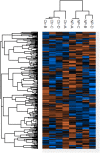Synergy of Sodium Nitroprusside and Nitrate in Inhibiting the Activity of Sulfate Reducing Bacteria in Oil-Containing Bioreactors
- PMID: 29867883
- PMCID: PMC5965020
- DOI: 10.3389/fmicb.2018.00981
Synergy of Sodium Nitroprusside and Nitrate in Inhibiting the Activity of Sulfate Reducing Bacteria in Oil-Containing Bioreactors
Abstract
Sodium nitroprusside (SNP) disrupts microbial biofilms through the release of nitric oxide (NO). The actions of SNP on bacteria have been mostly limited to the genera Pseudomonas, Clostridium, and Bacillus. There are no reports of its biocidal action on sulfate-reducing bacteria (SRB), which couple the reduction of sulfate to sulfide with the oxidation of organic electron donors. Here, we report the inhibition and kill of SRB by low SNP concentrations [0.05 mM (15 ppm)] depending on biomass concentration. Chemical reaction of SNP with sulfide did not compromise its efficacy. SNP was more effective than five biocides commonly used to control SRB. Souring, the SRB activity in oil reservoirs, is often controlled by injection of nitrate. Control of SRB-mediated souring in oil-containing bioreactors was inhibited by 4 mM (340 ppm) of sodium nitrate, but required only 0.05 mM (15 ppm) of SNP. Interestingly, nitrate and SNP were found to be highly synergistic with 0.003 mM (1 ppm) of SNP and 1 mM (85 ppm) of sodium nitrate being sufficient in inhibiting souring. Hence, using SNP as an additive may greatly increase the efficacy of nitrate injection in oil reservoirs.
Keywords: biocide; hydrogen sulfide; sodium nitroprusside; souring control; sulfate reduction.
Figures





References
-
- Bødtker G., Thorstenson T., Lillebo B. L., Thorbjornsen B. E., Ulvoen R. H., Sunde E., et al. (2008). The effect of long-term nitrate treatment on SRB activity, corrosion rate and bacterial community composition in offshore water injection systems. 35 1625–1636. 10.1007/s10295-008-0406-x - DOI - PubMed
LinkOut - more resources
Full Text Sources
Other Literature Sources
Molecular Biology Databases

